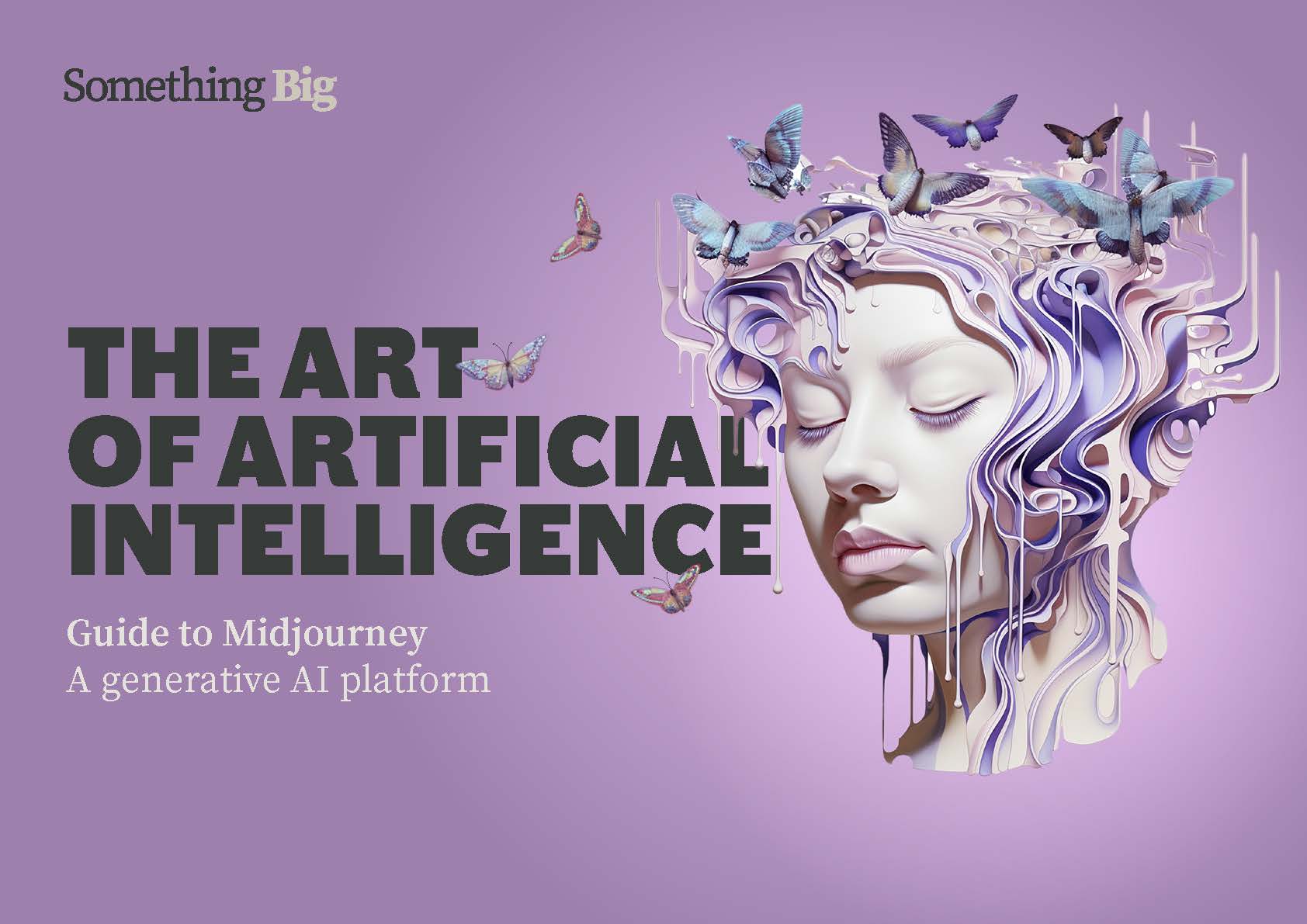By Sally Pritchett
CEO
We are bringing communicators together to navigate the ever-changing landscape of AI. Here, we share essential insights from our second 'Navigating AI Together' roundtable.
Some view AI as a tool for enhancing productivity, while others are understandably expressing concerns about its impact on jobs and the value of creative and communication skills. Recognising these concerns among our network of communication professionals, we’ve established a safe space for collaborative learning about AI and its ethical, responsible usage. Our commitment is to empower our community to embrace AI positively and with an open mind as we collectively explore its potential.
In our second ‘Navigating AI Together’ roundtable held in September, we delved into AI policies and governance, AI-assisted video creation, and shared our review of the generative AI tool Midjourney. One significant takeaway from the discussion was that while AI may boost productivity, it isn’t necessarily reducing workloads; it simply reshapes it.
For insights from our first roundtable, check out the write-up here, where we explored how communications influences workplace culture, employee experience, productivity, sales, customer service, and innovation.
AI insights: policies and governance
We were pleased to be joined by marketing expert, Danny Philamond, from fellow B Corp business, Magnus Consulting. Danny has been advising clients on AI usage, and during our discussion, he shed light on the importance of creating AI policies and governance.
Potential risks of AI:
When considering risks, we focused on marketing and communications:
- Sharing confidential data with third parties poses a significant risk. For example, OpenAI (the creators of ChatGPT) say within their terms of service that they may share data with their vendors (which is potentially up to 80 plugins as of writing). Anything you share with an AI tool has a potentially massive reach. However, within ChatGPT for example you can look to limit this extension by deselecting chat history and training, reducing your data transfer.
- When using an AI tool, think about whether you would want the information to be made public.
- Even if information isn’t strictly confidential, it might still be privileged. Consider whether you’d want AI to learn your product strategies, and potentially share that insight with competitors.
- If you’re using your knowledge and experience to refine AI outputs, and then feeding those back into the model, you’re enabling your unique insights to train the AI. Is that something you want to freely share?
Guidance for advising teams and suppliers:
Emphasise responsible usage:
- Individual accountability is crucial, as policies can’t cover every AI use, given the rapid evolution of the field.
- Maintain transparency, indicating when content is AI-generated.
- Integrate AI usage, accountability, and transparency into your due diligence processes.
Brands and transparency:
- Nearly three-quarters of consumers believe that brands should disclose the use of AI-generated content, according to a recent IPA study. Currently, it’s up to brands to decide on transparency.
- Some AI companies, including OpenAI, Alphabet, and Meta, have made voluntary commitments to watermark AI-generated content, which could become enforced regulation.
- Consider the impact of transparency: imagine if Photoshop or Instagram filters were required to disclose image alterations when they first became popular. Such transparency could have positively affected the growing challenges we’re seeing around self-esteem and mental health. We have the opportunity, and perhaps the moral responsibility, to be transparent about AI-generated content.
Break down company-wide AI policies:
- Build flexibility into policies, as the AI landscape evolves rapidly. Plan regular policy reviews.
- Provide training on the guidelines, ensuring everyone understands AI terminology and limitations.
- Support teams in utilising AI tools for efficiency while managing associated risks.
Recommendations for AI policies and guidelines:
As a starting point, all policies should consider:
- User accountability and responsible usage.
- Best practices for effective AI usage.
- Safe AI usage.
- Activity to avoid and risk factors.
- Data handling and protection.
- Compliance and governance.
- Training and feedback loops.
AI use case: Exploring AI-assisted video creation
During the previous session, we found that the vast number of AI tools and opportunities was overwhelming to many communicators, and so during this session, we turned our focus to just one potential use case: AI-assisted video creation. We shared an example of an AI-assisted video that we would be able to produce for clients, using the example of translating an employee policy handbook into a digestible animation (please get in touch if you’d be interested in watching this video and finding out more about the process involved). These videos can be quick to create, have the potential to be considerably more affordable than traditional video, be translated into multiple languages and can bring inaccessible documents to life.

After viewing the video, our group identified that AI-assisted video creation can be a solution for communication projects that often receive limited attention and budget, such as:
External communications:
- Product descriptions
- Platform demos
- Customs advice
- Product or service specifications
- Regulatory advice
Internal communications:
- Health and safety materials
- Employee handbooks
- Systems training
- Onboarding documents
- Policy materials
AI platform review: Midjourney
Midjourney is a generative AI program and service that produces images from natural language descriptions (called prompts). After submitting a prompt, Midjourney generates four different images, which you can then edit, or tailor your prompt to refine the concepts. Midjourney can create any style of image you can think of. Within our Midjourney platform review, we cover how to use it, subscriptions and licensing, prompt writing, and the pros and cons of using the platform from a communications perspective. You can download the full platform review here.

Navigating AI together: overcoming bias and achieving inclusion
In our next session we will examine the issue of the biases embedded in AI and explore how we can mitigate this bias and harness AI tools to foster greater inclusion and authentic representation.

